Given the forecast of rain all day we abandoned all hope of doing a hike today in the mountains of Snowdonia National Park. Hopefully we will be able to do that tomorrow with an improving forecast. For today we decided on a drive up to the northwest corner of
Wales. The ultimate goal was Holyhead up on the coast, with hopefully some interesting stops and scenery along the way. Phyllis chose a back road to drive even knowing it might be tight in places, and we went through several interesting little towns on the way up over the Pen-y-Pass. The most excitement of the whole day happened early on when, on a rock-wall-lined narrow stretch of the road a sheep jumped OVER the stone wall into the road in front of us and catapulted himself immediately back over the wall when confronted by our car's
squealing brakes. Who knew sheep could jump that high or perform acrobatics? Michael Jordan would be hard pressed to match that move. Luckily we were not going very fast, as it was a narrow road. Unfortunately but understandably, no photo is available. Hyperventilating, Phyllis drove even slower for a bit.
Pen-y-pas is a wide open mountain pass (rather like Turnagain Pass but with shorter mountains and no snow now) with numerous trails leading off in every direction (some to the top of Snowdon, the tallest mountain in Wales) and a rather small parking lot sign-posted "reserve a spot in advance". We wondered what that meant until down the other side of the
pass we saw the "park and ride" lot meant for the overflow (of which there was a lot even on this damp and windy day... these Brits will hike in any weather it seems, more often than not with their dogs).
We wound our way on down to the town of Llanberis with a couple of goals in mind. First, the National Slate Museum, which is run by the same folks who do the coal museum. Before this trip, we had no idea how strong a theme mining would be in England. First tin in Cornwall, then coal in south Wales, and now slate in northern Wales. The Romans used
local slate but the heavy use began with the Industrial Revolution in the mid-18th century, and the countryside bears the resulting scars in the form of abandoned quarries. The museum is located at the Dinorwig Quarry site, using many of its original industrial and processing buildings to tell the story. This site was a complete operation in itself, there were saw sheds to mill timber, a locomotive shed (small ones pulled the slate wagons), a giant water wheel to produce power, a foundry (complete with wooden patterns), a forge and a machine shop, and administrative
offices, all of which are well preserved and open for viewing. The museum grounds also include several quarrymen's cottages from different eras that were moved here from another mine.
The Dinorwig Quarry was the second largest in the world and was worked from 1787 to 1969, employing 3,000 men at its high point. It had over 30 terraces, the levels cut into the rock face from which the slate was extracted. Each was served by an ingenious system of inclined railways where one huge wagon full of slate was lowered by cables down the incline with its weight pulling its counterpart empty wagon back up. The process was apparently dangerous but efficient. Men hung by ropes "on belay" as they cut the slate
fragments out. Blasting was used as well. The rubble and less useful pieces of slate were simply pushed over the side of the terrace to form giant spoil heaps. The high point of production was the early 1900s, and the two world wars and the Great Depression signaled the beginning of the end of profitable slate production. Not only did many mines simply get shut down during the wars, but demand just never returned to previous levels. Slate is still produced in northern Wales, but only by a very few quarries and at a much reduced rate. Several old quarries have been repurposed as tourist attractions.
Leaving the museum, it was time for lunch and Craig once again made an excellent choice, the Caban Cafe, just down the road. Craig went with the chicken, chorizo, white bean and
orange cassoulet while Phyllis opted for the cauliflower steak on coconut and lentil dahl (whatever that is). It goes without saying that Craig won lunch. Then, as the weather was deteriorating, we drove on to Holyhead hoping to catch a view of the South Stack Lighthouse, which is actually on a small island, as is Holyhead itself (all connected to the island of Anglesey and the mainland by a causeway over which the motorways and railroad run). Alas, the weather got even worse and the west side of the island was so foggy we couldn't see the water, much less the lighthouse. Still we'd seen quite a bit already so we declared victory and drove back to Porthmadog by the fastest route of better roads.

 Holyhead, Wales, United Kingdom
Holyhead, Wales, United Kingdom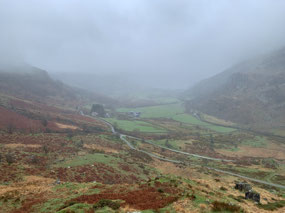
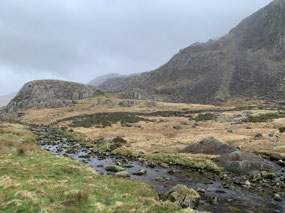
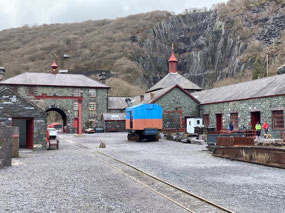
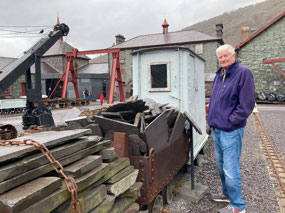
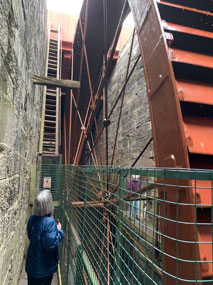
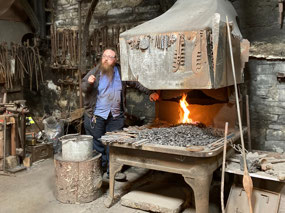
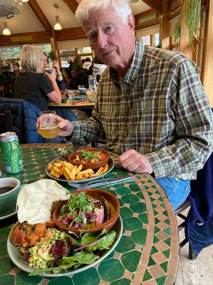



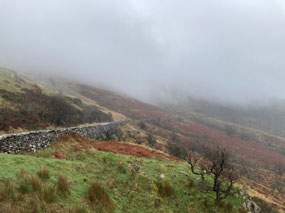
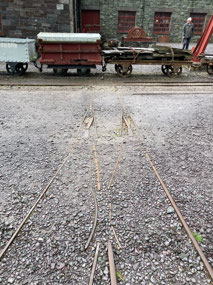
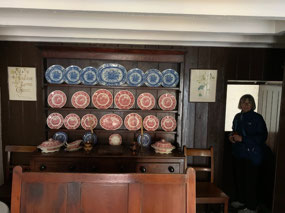
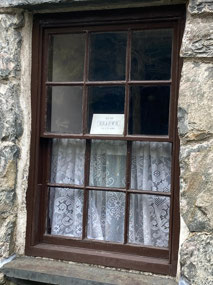

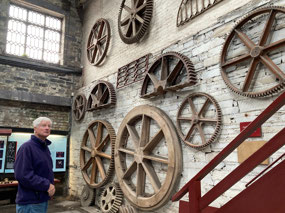
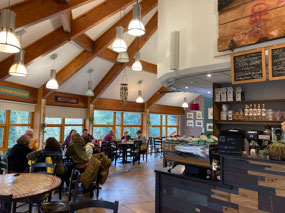
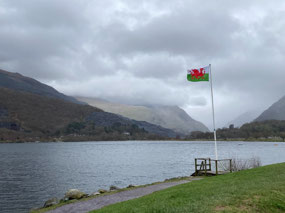
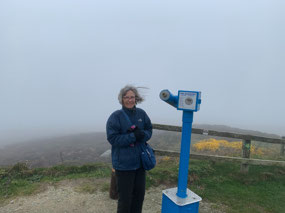
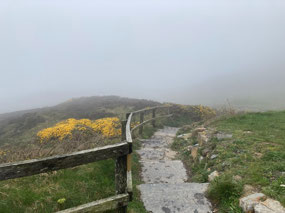
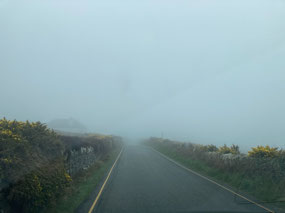
2025-05-22